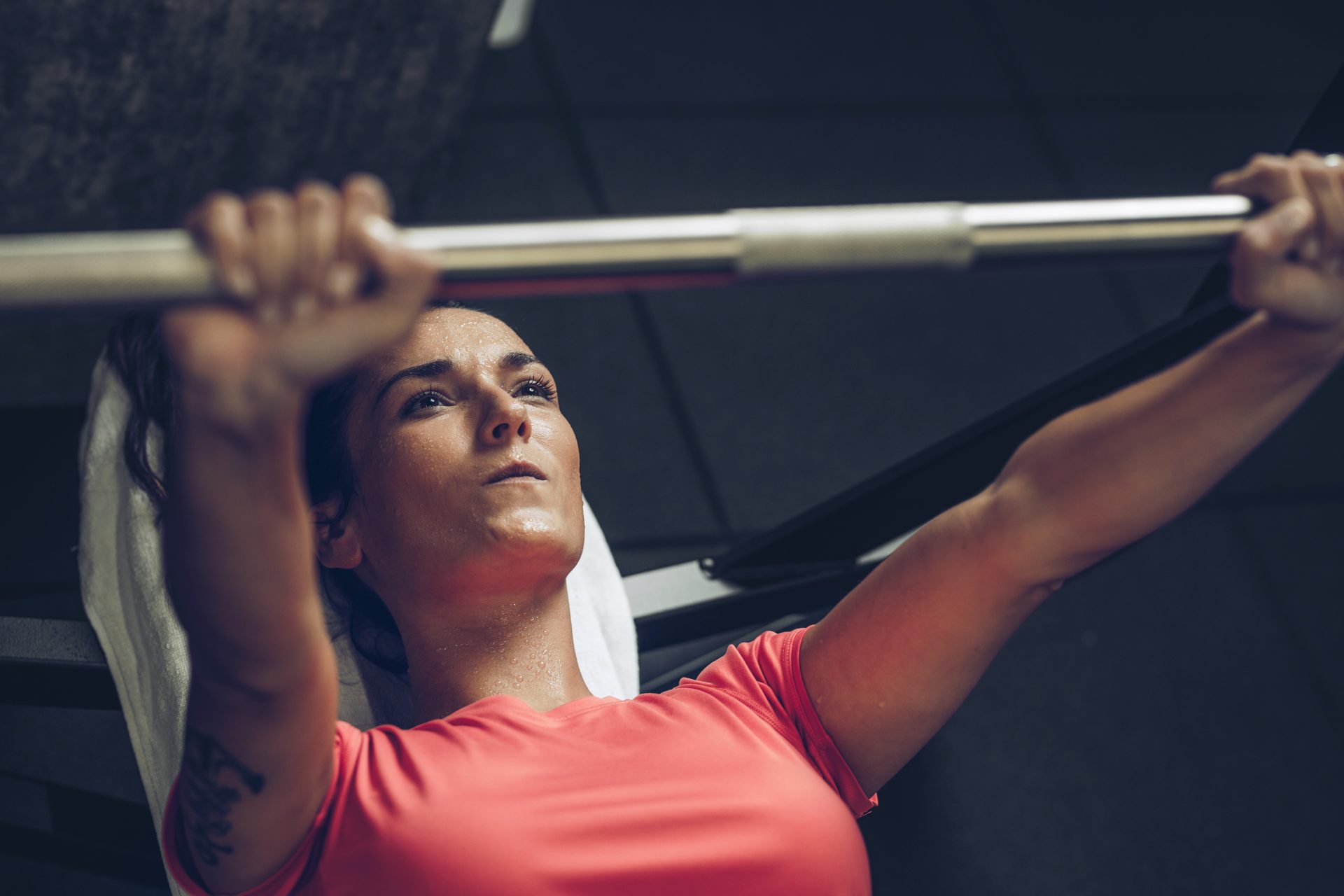Women often neglect bench press in their strength training routines. Here’s why that’s a mistake…
‘How much do you bench?’ is such a stereotypical gym-bro question that it’s now become an insider joke. The phrase is so synonymous with big, male lifters and classically masculine gym culture that it’s funny… to a point. Because the truth is that this association means the exercise can be off-putting for many women.
Despite the fact that there are more women on the gym floor than ever, and we’re squatting and pressing our way into the weights room, benching can feel intimidating. When we asked the Strong Women readers how they felt about the move, a third of them said that they try to avoid it. It’s a shame, given that bench is just as important and empowering as any other move.
You may also like
Chest workout: 3 press-up variations that build strong chest muscles
One woman trying to prove that is Karenjeet Bains, a Team GB powerlifter and an ambassador for Brawn, the powerlifting data app. She specialises in bench press, most recently placing sixth at the World Bench Press Championships. Bains started powerlifting eight years ago, aged 17, to improve her performance in athletics.
“I was a 300 metre regional champion, and I initially went to the gym with my dad just to become more explosive and powerful in my sprinting. I’d never touched a weight before, but within three months my dad had entered me into my first competition, which I won. I just really loved how strength training made me feel, so I never stopped,” she explains.
At the time, the sport was particularly male-dominated, “but now there are so many people taking part, and I often go to competitions where there are more girls than guys. It’s particularly great for me, a Sikh girl from a South Asian background, as often we don’t get the same opportunities as boys in more traditionally cultural families,” Bains says.
Now, her mission is to encourage more girls to get under the bar – but particularly with bench.
Should women bench press?
The clear answer is yes, but why is the exercise seen as something that’s particularly masculine – more so than other weight lifting moves? “I think a lot of women are nervous about injuries, particularly to the chest area,” says Bains. Indeed, there are rumours that benching will change your breast size – making them either bigger or smaller depending on who you talk to. That can be a pretty big worry for a lot of women, but don’t be nervous: breasts aren’t made of muscle, and their size can’t change from bench pressing alone.
You may also like
Do I need to wear a sports bra? This is what happens when you aren't supported while exercising
“I also think a lack of confidence can come because women don’t have the same support when it comes to training that I had, and that a lot of men get. They might feel uncomfortable teaching themselves or making mistakes,” says Bains. Indeed, as many women are encouraged to lift for lower body gains, there’s even less emphasis on lifts such as bench. That’s a self-fulfilling prophecy – the less we see it, the less we do it. It’s a cycle that Bains is working hard to undo, as she says bench pressing is a hugely important compound exercise for building upper body strength. That improves your posture and functionality – and builds a well-balanced body.

How to bench press
When it comes to technique and confidence, Bains has tips.
If you can squat, you can bench
Putting aside any injuries or restrictions, most gym-goers who are already working on weight lifting moves are totally capable of bench pressing, too. “The bench press is probably the easiest of the three powerlifting disciplines, which also include squat and deadlift. Frankly, it’s the exercise where you’re most in control, your body has the most support, and it’s the least technical,” says Bains.
You’re probably already building your chest
Don’t let that fear of chest exercises put you off, as many of the bodyweight or lighter weight moves you’re doing are already building the perfect foundation for bench. “Press ups and shoulder presses are putting you in a good stead before you start benching,” says Bains. And if you’re already performing chest press with dumbbells, you’re more than ready to get under the bar.
You may also like
Powerlifting vs weightlifting, what is the difference? Fitness trainers answer the most googled questions
You deserve to use the bar
You might feel like you’re taking up space by using a bar that’s not loaded, but we all start somewhere, says Bains: “I started with the empty bar. I might be lifting big weights now, but everyone starts from there. It’s a long game: your muscles need time to grow and get used to it, so there’s going to be some slowness initially.”
Check your form
There are lot of ways to bench. In powerlifting, they use arched backs and flat feet. In gym-based strength training, you might want to simplify the move. “If you’re learning, I wouldn’t suggest copying a powerlifter. Doing a flat bench press is probably better, so lie flat on the bench and let your feet rest gently on the floor – it will just keep the pressure off the lower back and increase range of motion.”
Images: Brawn / Getty
Source: Read Full Article
